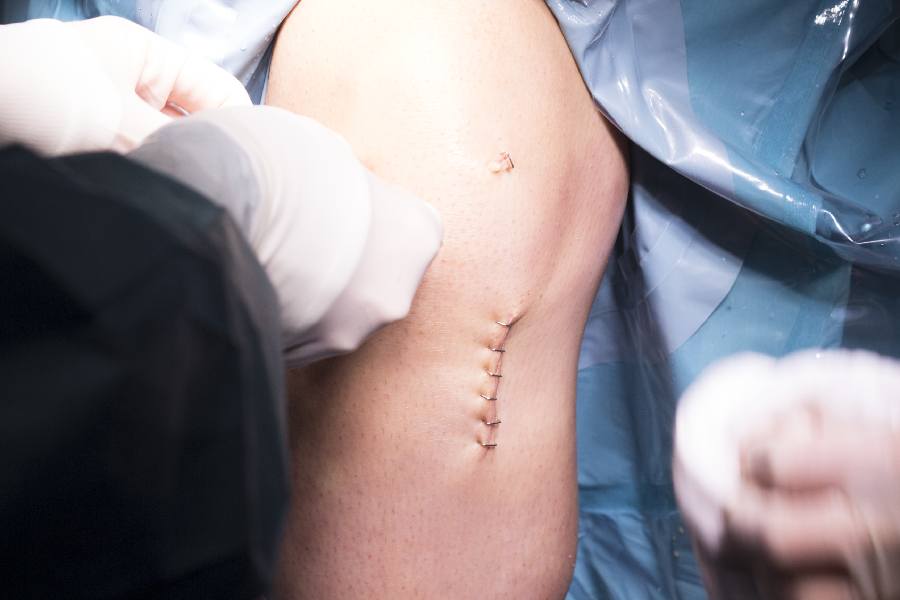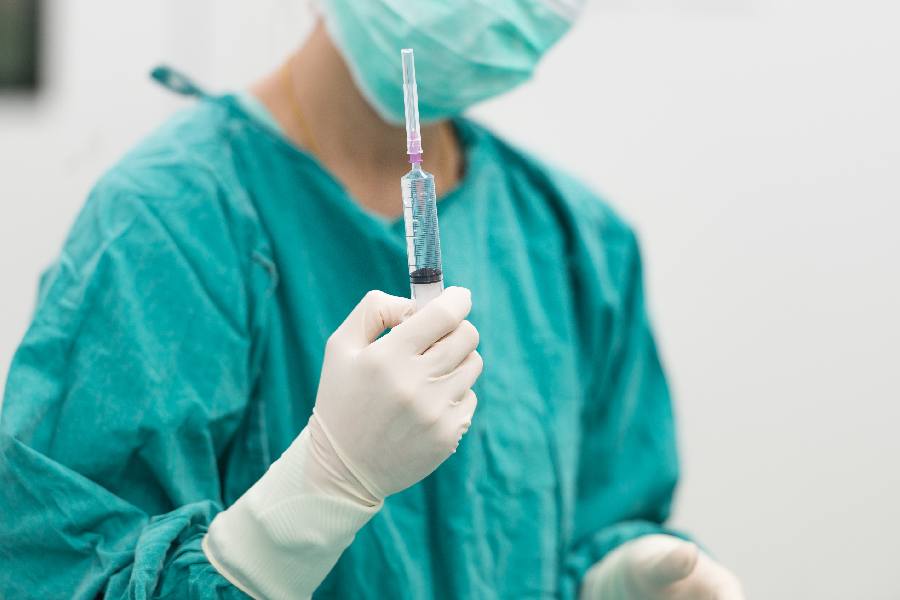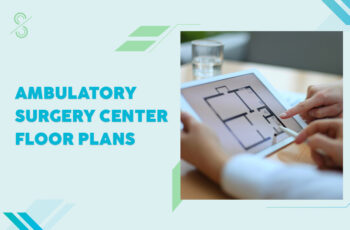Ambulatory Surgical Procedures List
The number of procedures performed in ambulatory surgical centers has increased in the past few years due to their importance in modern healthcare. Surgery costs are lower in ASC than in hospitals, making it a more convenient option for patients. This article presents an ambulatory surgical procedures list. It offers detailed explanations of how and in what way each of them is performed.
Outpatient surgery allows you to rest and heal at home instead of going through the experience of a hospital stay.
Common Ambulatory Surgical Procedures
A non-invasive surgery can now be performed in ambulatory settings. Millions of ambulatory surgical procedures are performed annually due to the low possibility of complications and small health safety threats.
The following ambulatory surgical procedures list will help you discover what types of surgeries are performed on an outpatient basis. It will also give you an insight into the timeframe of the healing process based on your medical history and the surgeon’s advice.
Orthopedic procedures
Lesser surgeries on tendons, joints, and ligaments can be performed in ambulatories. In addition, procedures on the bones and muscles usually don’t require a long hospital stay. Thus, patients are usually sent home to recover shortly after the surgery.
Many people suffer from torn knee ligaments and may require getting a meniscectomy. If the damage is minimal, this type of surgery requires the use of small instruments to repair it. But more serious injuries may involve an open-knee procedure which takes at least a month to heal.
Another orthopedic procedure suitable for ambulatory care is treating carpal tunnel syndrome. Due to this medical condition, some patients experience weakness and pain in their hands. Doctors perform endoscopic surgery in ambulatories to ease the pain and release pressure.
Arthritis is one of the most common reasons for hip pain and stiffness. For some patients, this condition may cause a disability. Thus, they require hip arthroscopy to replace the damaged portions.
This part of the ambulatory surgical procedures list may sound scary. But it’s actually less invasive than the traditional method of replacing the hip with a prosthetic. The hip arthroscopy may also ensure a faster recovery.
Physically active people are no strangers to foot and ankle injuries. Sprains and fractures often cause instability and throbbing pain, which require repair. Most cases require bone alignment and muscle repair. Then, the patients undergo physical therapy.

Ophthalmic procedures
Eye procedures require precision and care by surgeons. But ophthalmic procedures are usually performed faster than most people think. Also, patients don’t need to stay in the hospital after their eyes have been surgically treated.
The most common eye surgeries in ambulatory centers are lens implants, eyelid defect repair, and eye lesion removal. But some ambulatories also perform cataract surgeries and eye muscle revisions.
Dermatological procedures
Many people experience skin problems that must be surgically treated. But even though these procedures are complex, they may be performed in outpatient settings. The most common ambulatory dermatological procedures include exeresis and flap, partial- or full-thickness skin graft, and nail apparatus.
Gastrointestinal procedures
Problems with the digestive system are very common. Only a small percentage of gastrointestinal issues require surgical treatment. The most common procedures involve the esophagus, stomach, intestines, and other digestive organs.
The most common outpatient gastrointestinal procedures that can be done include colonoscopy, biopsy, sigmoidoscopy, and esophagogastroduodenoscopy. Some ambulatory centers can even perform colon cancer screenings if patients request them.
Urological procedures
Depending on the diagnosis and treatment plan of the patient, urological procedures can be noninvasive and may require minimal healing time. Most commonly, patients need kidney stone fragmentation and urethra incisions in ambulatory settings.
ENT procedures
Issues with the ears, nose, and throat are a part of otolaryngology treatments. Most patients have tonsil problems and need nasal septum repairments.
Other ENT procedures include turbinate surgeries, adenoid removal, cleaning eardrum openings, neck lesion removal, and sinus endoscopy. Most ambulatory centers send their patients home to rest shortly after completing one of these procedures.
Women’s health procedures
Hospital admissions due to women’s health problems have been minimized. Now there is an option for treating gynecological conditions in outpatient settings. Most women visit ambulatories after they have received surgery for further treatment.
Ambulatory centers have modern approaches and advanced technology when it comes to performing noninvasive women’s health procedures. These types of treatments are more cost-effective for women than visiting a hospital.
The most common ones are polyp removal, diagnostic hysteroscopy, fibroid removal, sterilization, and endometrial ablation.
Pain management procedures
Some patients suffering from chronic pain may require pain management procedures. They can be done in an outpatient surgery center for a lower cost and shorter recovery time upon a doctor’s evaluation.
Doctors recommend pain management procedures. These include epidural injections, joint anesthesia injections, and nerve-blocking and pain-relieving shots.

Benefits of Ambulatory Surgical Procedures
Outpatient procedures can be beneficial for patients in many ways. Most people like the idea of skipping long hospital stays and paying hefty fees. Also, the process of getting an ambulatory surgical procedure is faster and more convenient for the majority.
Avoid unexpected delays
Scheduling surgery in hospitals can take a long time. Also, unexpected delays may occur often. Luckily, ambulatory surgical centers have less complicated scheduling measures. Thus, emergency surgeries will be performed as soon as possible.
A less stressful recovery period
Most people prefer recovering post-op at home. It’s less stressful than staying in a hospital for a few days. This is especially convenient for children. They are easily overwhelmed and afraid of the hospital environment, wishing to return home right after surgery.
No hospital room costs
Paying for a hospital room with ambulatory surgical centers is a thing of the past. After most outpatient surgeries, you will be discharged shortly after the procedure and treatment plan have been finalized.
Increased doctor accessibility
Physicians in an ambulatory setting have the same responsibilities as hospital doctors. But they are more accessible to patients. They control their way of working and set their own schedules.
Thus, they have more time to provide special care and advice to each patient they have treated. Physicians are usually always available for quick phone calls and pre-scheduled check-ups to ensure everything goes well after the procedure.
Many patients consider ambulatory surgical centers better than hospitals. They receive personal attention before, during, and after the procedure. They can contact their physicians whenever they need. They won’t need to hear the same old frustrating excuse that the doctor is busy.
No hospital bed restraints
Most of us imagine the recovery period after surgery as very difficult. We think we will be restrained to our hospital beds for some time without the chance to walk around. But ambulatory settings allow for higher mobility and more frequent physical activity.
Since outpatient procedures are often not very invasive, you can move your body a few hours after the surgery. Also, when you are sent home, you will receive the assistance of your family. They might encourage you to keep moving, ultimately resulting in reduced recovery time.
Are There Any Drawbacks of Ambulatory Surgery?
Patients who undergo any surgical procedure need extra care. Thus, physicians at ambulatory surgical centers advise them to avoid driving for 24 hours after surgery. They must come accompanied by someone who will get them home safely.
Also, some patients experience side effects after outpatient procedures. These include drowsiness, sore throat, and headaches.
Preoperative Preparation
Doctors in ambulatory surgery centers must inform patients about preoperative preparation. This is to avoid infections and possible complications. Receiving medical care should be helpful instead of stressful during outpatient procedures.
Before the medical staff performs a procedure in their ambulatories, they must clean their surgical instruments. They should also keep the operating room spotless. Besides, they need to develop a personal connection with the patient for the best outcomes.
Patient evaluation
Preoperative evaluation of the patient is crucial during surgical care planning. Many patients might believe their condition can be treated in ambulatories. But they might present surgical risks due to medical disorders. The issues must be dealt with before they can undergo ambulatory treatment.
An experienced doctor can usually quickly determine whether a patient should be admitted into ambulatory care. They run a few tests as a part of their patient evaluation before the procedure is scheduled to take place.
Anesthesia options
Patients treated in hospital and ambulatory settings are offered the same type of anesthesia options. Most patients don’t need to stay overnight. Thus, surgical centers offer ambulatory or also called local anesthetics.

Medication management
Preventing an infection before some surgeries is very important. Thus, medication management is crucial. Some patients are prescribed antibiotics before a procedure to avoid unwanted health complications. Healthcare providers must know if the patient really needs an antibiotic by identifying potential risks before prescribing it.
Postoperative Care
A common concern among patients receiving ambulatory care is the recovery period. They are often unsure of what to expect after outpatient surgery. They also don’t know who is responsible for their well-being after they are discharged from the center and sent home.
Patients must have the doctor’s contact information and call them if they need further instructions for wound care. Also, they need to call the surgery center in case they experience a high fever, sore wound, or infection.
Although most ambulatory procedures go smoothly, complications may occur and require emergency care. Thus, let’s discover what are some of the doctor’s responsibilities during postoperative preparation:
Monitoring vital signs
Ambulatory surgical centers ensure patients receive the best care by monitoring their vital signs. They keep track of the patient’s heart rate, temperature, blood pressure, and oxygen levels. This way, physicians can identify possible issues during the early stage of postoperative. Then, they can create their treatment plan based on the patient’s general health.
Pain management
Many patients experience postoperative pain around their incision sites. Thus, ambulatory surgery centers must include pain management techniques in their treatment plans. Studies show that analgesic regimens may relieve pain and help patients heal faster.
Discharge instructions
Doctors must prescribe appropriate medications to patients upon discharge. They also need to schedule check-ups after discharge to provide any necessary instructions or advice patients need to recover post-op fully.
Safety and Quality Considerations
Creating an ambulatory surgical center takes more than building and renovating a facility. The safety and quality of such institutions are crucial for their success and professionalism. Thus, most people who want to build ambulatory centers need consultants.
We are a #1 ASC consulting service with over 45 years of professional experience. We assist individuals and companies in designing the best ambulatory surgery centers. At the same time, we provide advice on ensuring safety and quality.
Accreditation and certification
Being known as an accredited and certified ambulatory surgery center is extremely important. For this reason, we offer the necessary guidance and advice. We follow the Joint Commission and Accreditation Association for Ambulatory Health Care principles.
The accreditation and certification of an ambulatory surgical center have much to do with staff training and expertise. Thus, ensure the medical personnel is well-trained and experienced in providing professional care. This way, you will guarantee patient satisfaction and a good reputation.
Infection control measures
An ambulatory surgical center is noteworthy if it takes infection control measures. Focusing on preventing infections ensures patients leave the center in good health. But it also makes the organization reputable.
Thus, regular cleaning, disinfection, hand hygiene, vaccination, safe injection practices, and use of sterilized equipment are some of the key measures for avoiding infections in ambulatories. Also, the medical staff must meet for regular briefs to revise possible problems in the ambulatory environment.
Preventative measures
Physicians at ambulatory surgical centers must wear protective equipment such as gloves, gowns, and masks as preventative measures against patient health complications. Contaminated equipment and the environment often cause sepsis and similar diseases.
Conclusion
We hope that after you get to know the ambulatory surgical procedures list, you will have a clear picture of outpatient care and how it’s supposed to work. Ambulatory surgeries are minimal and non-invasive, so the recovery period is often short.
Some patients can get back on their feet a few days after lesser surgeries. But that’s not the case for everyone. Doctors usually recommend the recovery time frame to patients based on their medical condition and the severity of their procedure.
Most people prefer the less stressful experience of getting surgery in an ambulatory surgical center rather than visiting a hospital and staying for long periods of time. Outpatient procedures allow you to spend your time with your family in the comfort of your own home.





